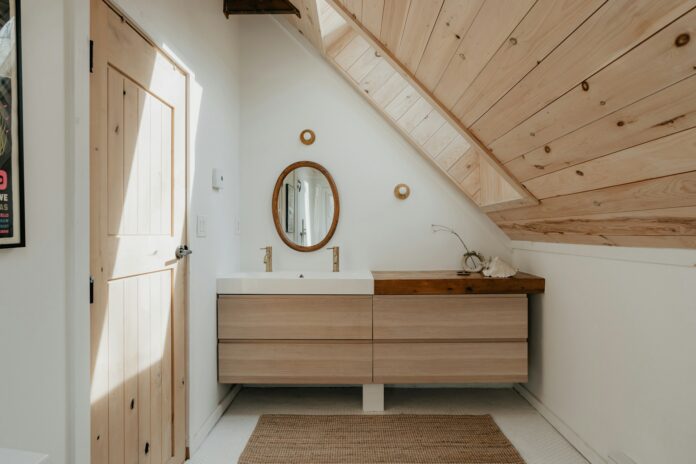Picture this: it’s 7am on a drizzly Tuesday morning, and you’re staring blearily at your trusty cafetière, wondering if there’s more to life than plunging, pouring and pondering if it’s okay to dump spent coffee down the sink.
There absolutely is, and no it isn’t. While the French press has served us faithfully through countless mornings (and let’s be honest, afternoons too), the world of home coffee brewing is vast, varied, and surprisingly accessible.
From the meditative ritual of pour-over to the theatrical flair of a stovetop espresso, mastering different brewing methods isn’t just about impressing your mates – it’s about discovering which style brings out the best in your beans and, crucially, fits into your morning routine. So put the kettle on, and let’s explore seven coffee brewing methods that’ll transform your kitchen into your favourite café.
The Pour-Over: Precision & Patience
The pour-over method – think V60, Chemex, or good old filter cone – has become the darling of third-wave coffee shops, and for good reason. This method gives you complete control over every variable: water temperature, pour speed, and brewing time.
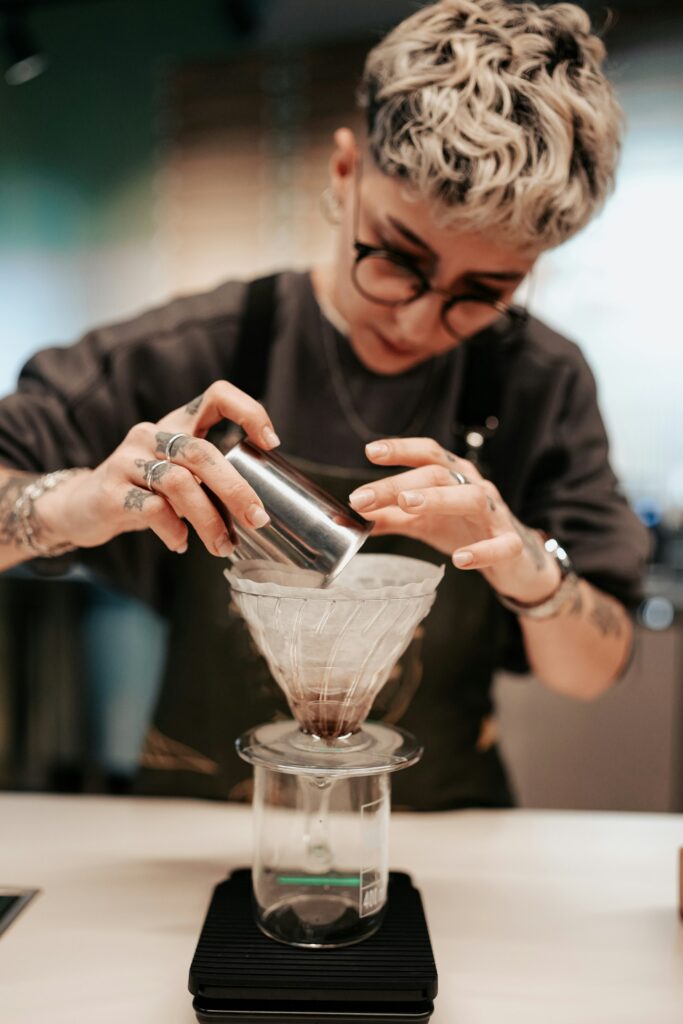
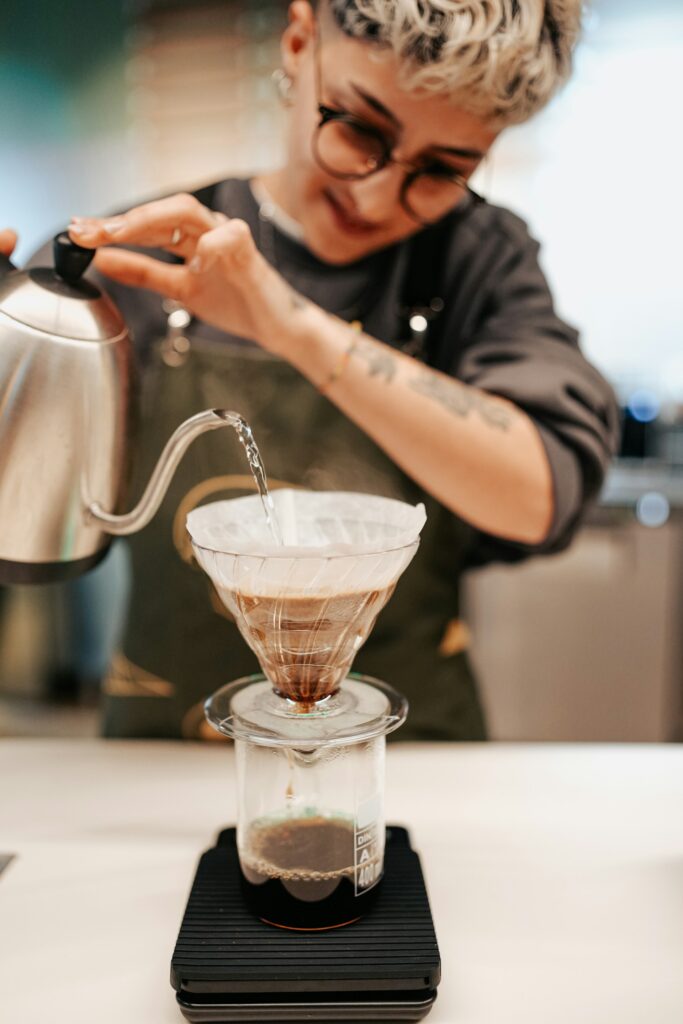
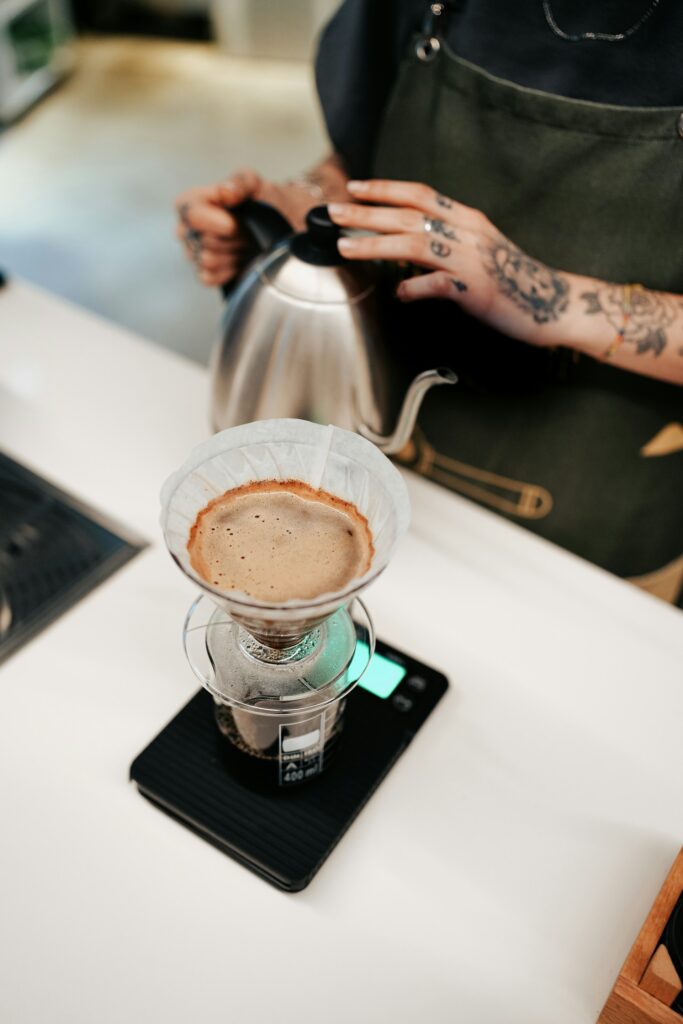
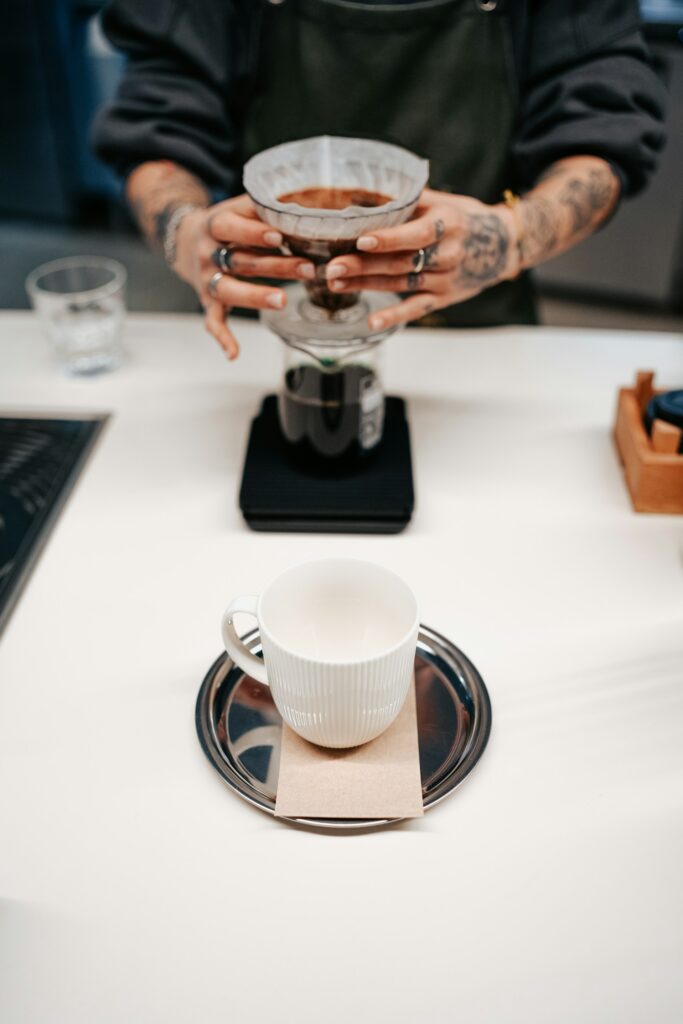
Start with medium-ground coffee (think coarse sand texture) and water heated to about 93°C. The key is the slow, circular pour, which should take about 3-4 minutes total. Yes, it requires a bit more attention than pressing a button, but the clean, nuanced cup you’ll get is worth those extra morning minutes. Plus, there’s something rather zen about the whole process – consider it mindfulness with caffeine benefits.
For best results, use a 1:15 coffee-to-water ratio (so 20g coffee to 300ml water). Pre-wet your filter to remove any papery taste and warm your brewing vessel. Start with a 30-second bloom – pour just enough water to saturate the grounds (about twice the coffee weight), then wait as CO2 escapes. This crucial step ensures even extraction. Continue pouring in steady circles, keeping the water level consistent, and aim to finish your final pour by the 2:30 mark.
The AeroPress: A Traveller’s Best Friend
Invented in 2005 by a frisbee manufacturer, the AeroPress has become a favourite among coffee enthusiasts worldwide. This ingenious plastic contraption uses air pressure to push water through coffee grounds, creating a concentrated brew in under two minutes.
What makes it brilliant is its versatility – you can brew anything from espresso-style shots to longer, filter-style coffees. It’s virtually indestructible, making it perfect for camping trips or that dodgy office kitchen. The cleanup is satisfyingly simple too: just pop out the used coffee puck and give it a rinse.

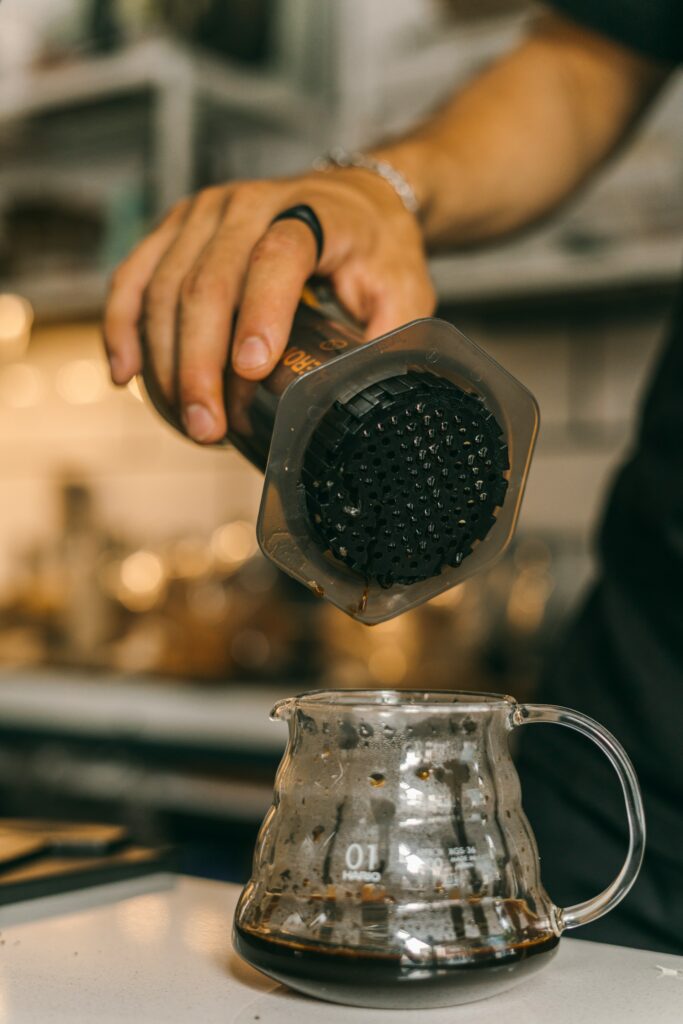
The standard recipe calls for 17g of medium-fine coffee (slightly finer than pour-over) and 220ml of 80°C water. Insert a paper filter, add coffee, pour water to the top, stir for 10 seconds, then press slowly for 20-30 seconds. For a stronger brew, try the inverted method: flip the AeroPress upside down, brew for 1-2 minutes, then carefully flip and press. Water temperature is crucial here – anything above 85°C tends to over-extract and create bitterness, while 75-80°C brings out chocolate and caramel notes.
Espresso Machine: A Home Barista’s Dream
While a proper espresso machine requires investment (both financial and educational), mastering home espresso opens up a world of coffee possibilities. From cortados to cappuccinos, you’ll have café-quality drinks without the café prices.
The learning curve is steep – getting your grind size, dose, and tamp pressure just right takes practice. But once you’ve pulled that first perfect shot, complete with golden crema, you’ll understand why people become obsessed. For those starting out, consider a coffee subscription with ESE pods – they take the guesswork out of dosing while you perfect your milk-steaming technique.

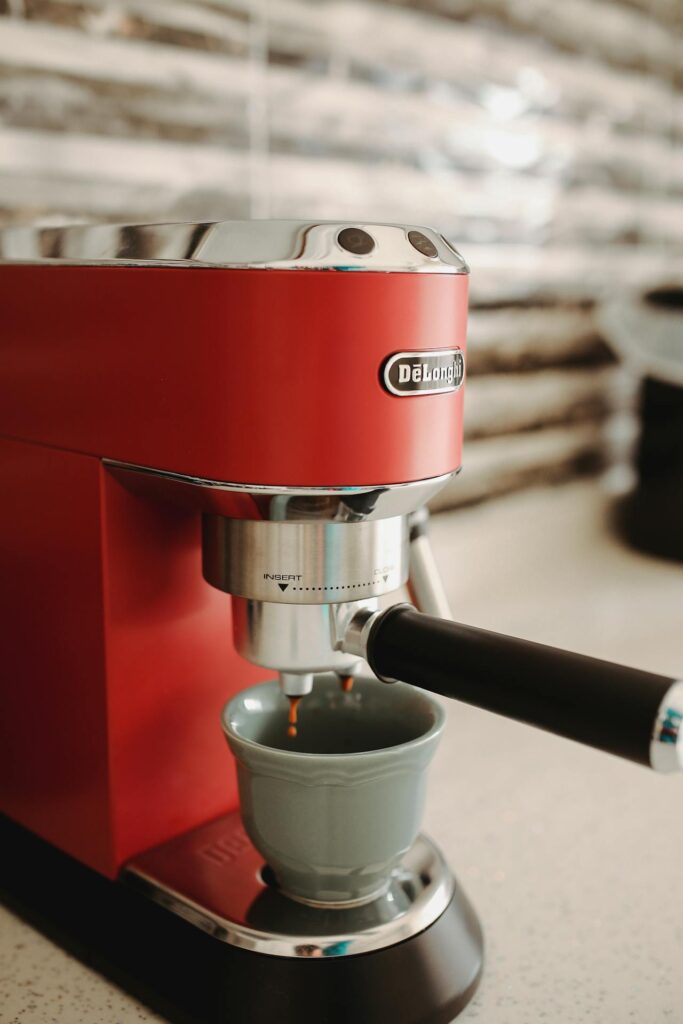
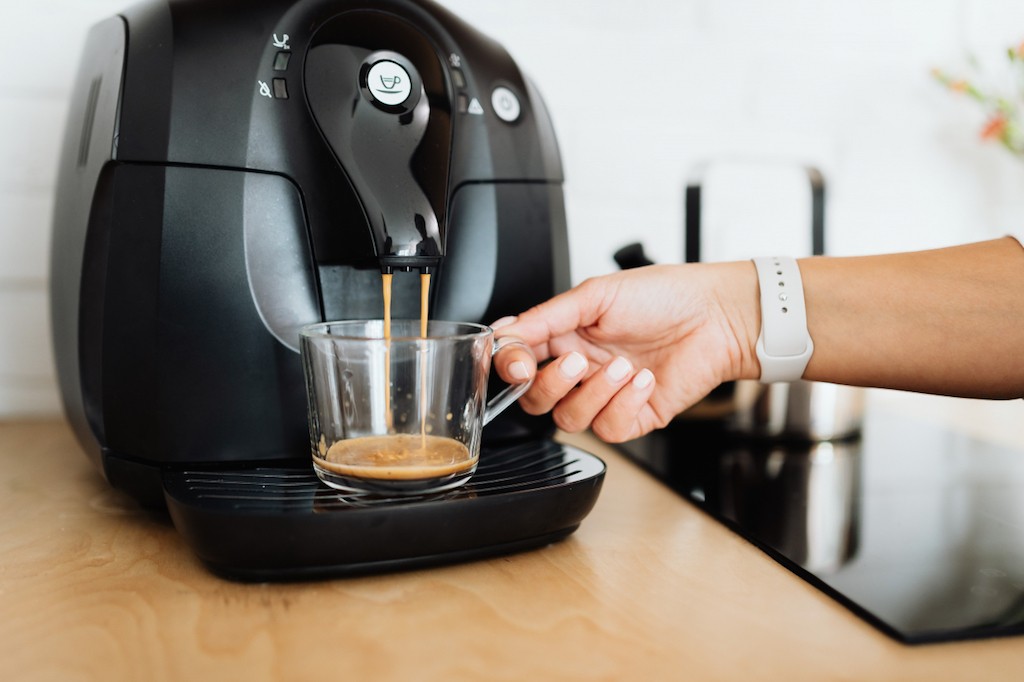
The golden rules: aim for 18-20g of coffee yielding 36-40g of espresso in 25-30 seconds. Your grind should feel like fine table salt, and your tamp pressure should be firm and level – about 15kg of pressure. Temperature surfing (flushing water through the group head before pulling a shot) ensures consistent heat. For milk steaming, keep the steam wand tip just below the surface until the milk reaches 35°C (creating microfoam), then plunge deeper and create a whirlpool until it hits 60-65°C. Any hotter and you’ll scald the milk, destroying its natural sweetness.
Moka Pot: A Little Slice Of Stovetop Theatre
The Moka pot – Italy’s answer to home espresso since 1933. This octagonal aluminium beauty uses steam pressure to force water through coffee grounds, creating a strong, concentrated brew that’s not quite espresso but certainly packs a punch.
Fill the bottom chamber with hot water (using cold water makes the coffee taste metallic), add medium-fine grounds to the basket, and place it on medium heat. Listen for the gurgling sound – that’s your cue that coffee magic is happening. The result? A bold, slightly bitter brew that’s perfect for homemade flat whites or, if you’re feeling continental, served straight up with a sugar cube on the side.
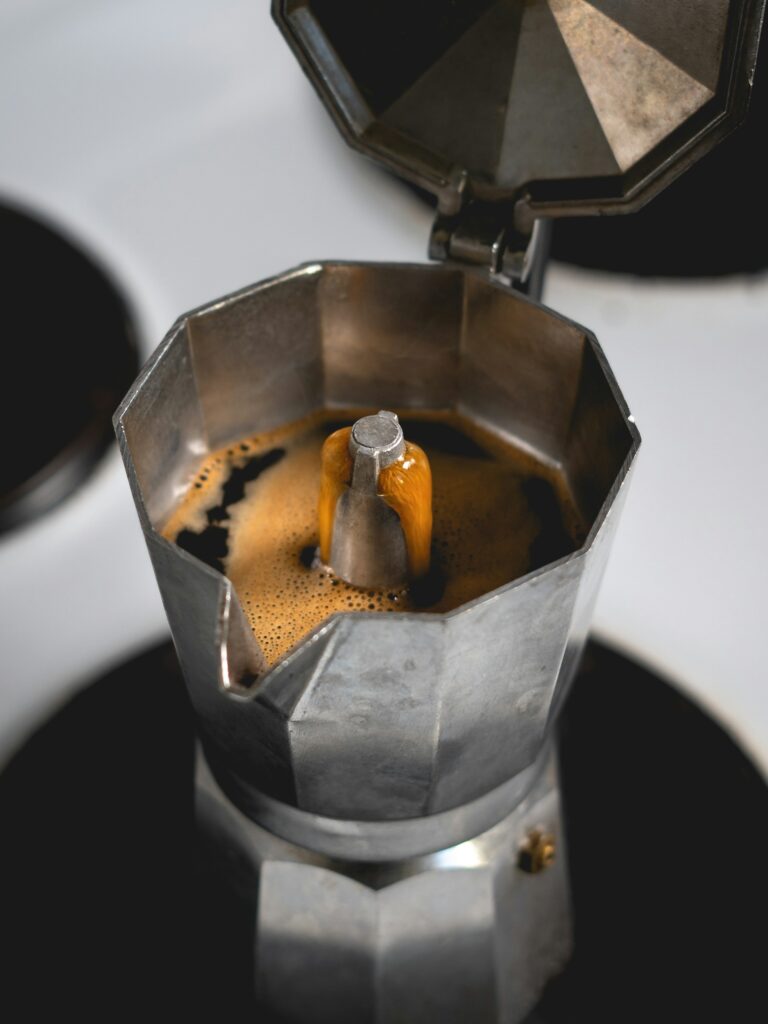
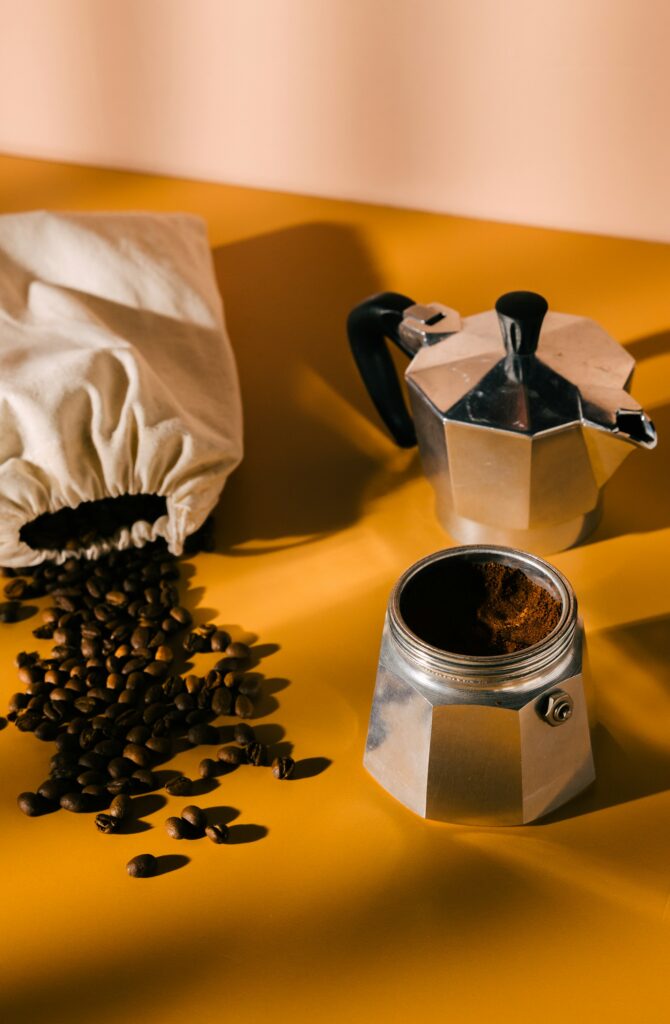
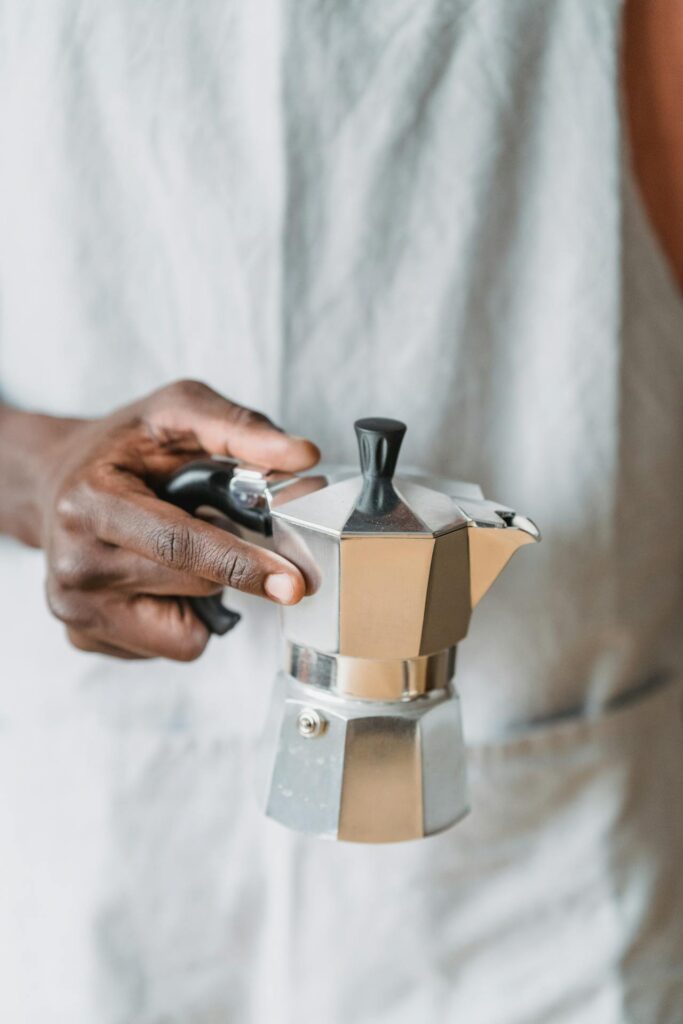
Important details: fill water to just below the safety valve, and don’t tamp the grounds – just level them off with your finger. Keep the lid open while brewing so you can watch for the honey-coloured stream that signals perfect extraction. When it turns blonde and starts sputtering, remove from heat immediately to avoid burning.
Never put your Moka pot in the dishwasher – the harsh detergents strip away the coffee oil coating that prevents metallic tastes. A simple rinse and air dry keeps it in perfect condition.
Cold Brew: Summer In A Cup (Or, Indeed, A Jar)
Cold brew isn’t just hot coffee gone cold – it’s an entirely different beast. By steeping coarse grounds in cold water for 12-24 hours, you extract different compounds than with hot brewing, resulting in a smooth, naturally sweet concentrate with about two-thirds less acidity.
Mix one part coarse ground coffee with four parts cold water in a jar, let it steep overnight in the fridge, then strain through a fine mesh or coffee filter. The concentrate keeps for up to two weeks, ready to be diluted with water, milk, or ice. It’s meal prep for coffee lovers.
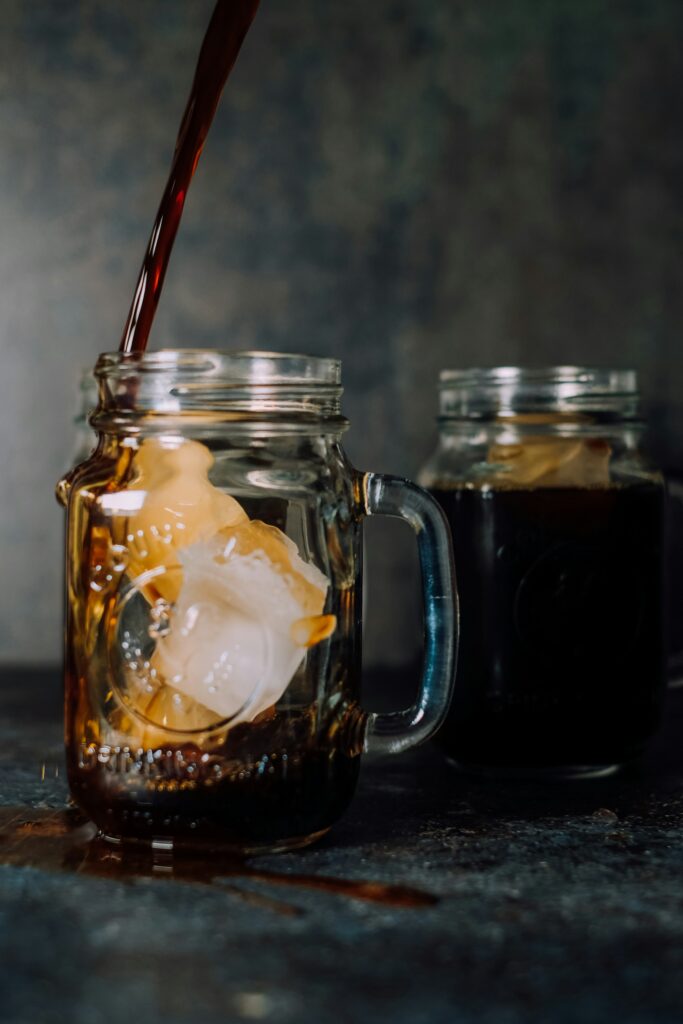

For optimal extraction, stir the grounds and water thoroughly at the beginning, then again after an hour. Room temperature brewing (12-15 hours) extracts more quickly than fridge brewing (18-24 hours) and produces a slightly different flavour profile – fruitier and more acidic. When straining, do it twice: first through a fine mesh sieve to remove the bulk of grounds, then through a coffee filter or cheesecloth for clarity. The final concentrate should be diluted 1:1 with water or milk, though adjust to taste.
Pro tip: freeze some concentrate in ice cube trays for iced coffees that don’t get watered down.
Read: 7 of the best summer coffees, IDEAL for a caffeine hit when the weather’s hot
Turkish Coffee: A Taste Of History
Turkish coffee isn’t just a brewing method; it’s a UNESCO-recognised cultural tradition. Using an ibrik (also called a cezve), you’ll need the finest ground coffee possible – powder-fine, like flour.
Combine cold water, sugar (if desired), and coffee in the ibrik, then heat slowly on the hob. The key is to let it foam up without boiling – remove it from heat just as it begins to rise, let it settle, then repeat twice more. Serve in small cups with the grounds still in – they’ll settle to the bottom, and reading the patterns they leave is a fortune-telling tradition in itself.
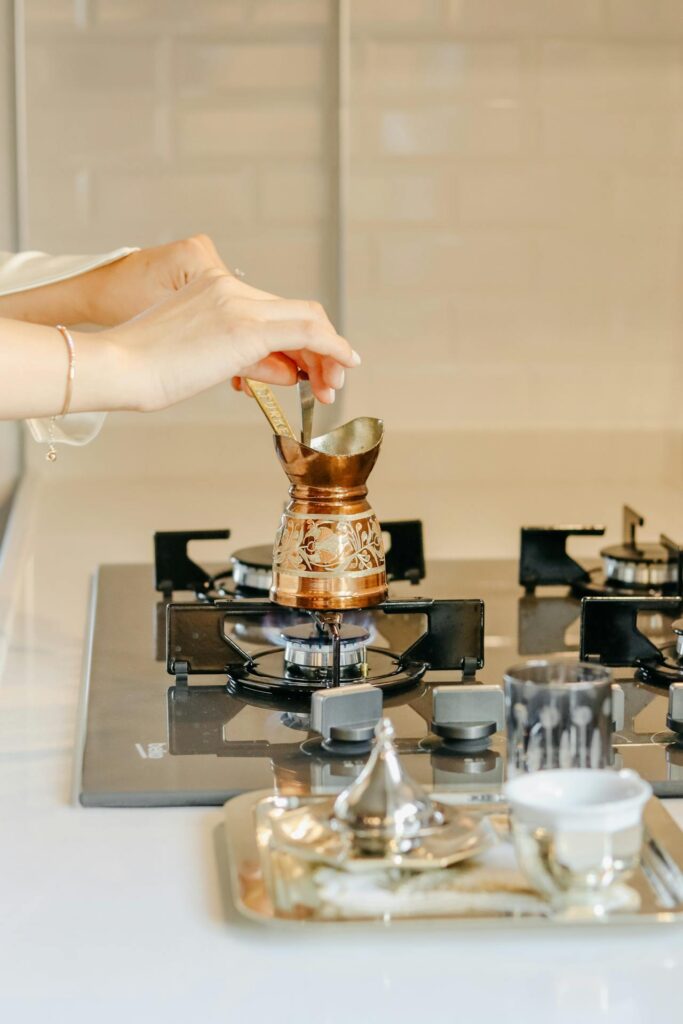
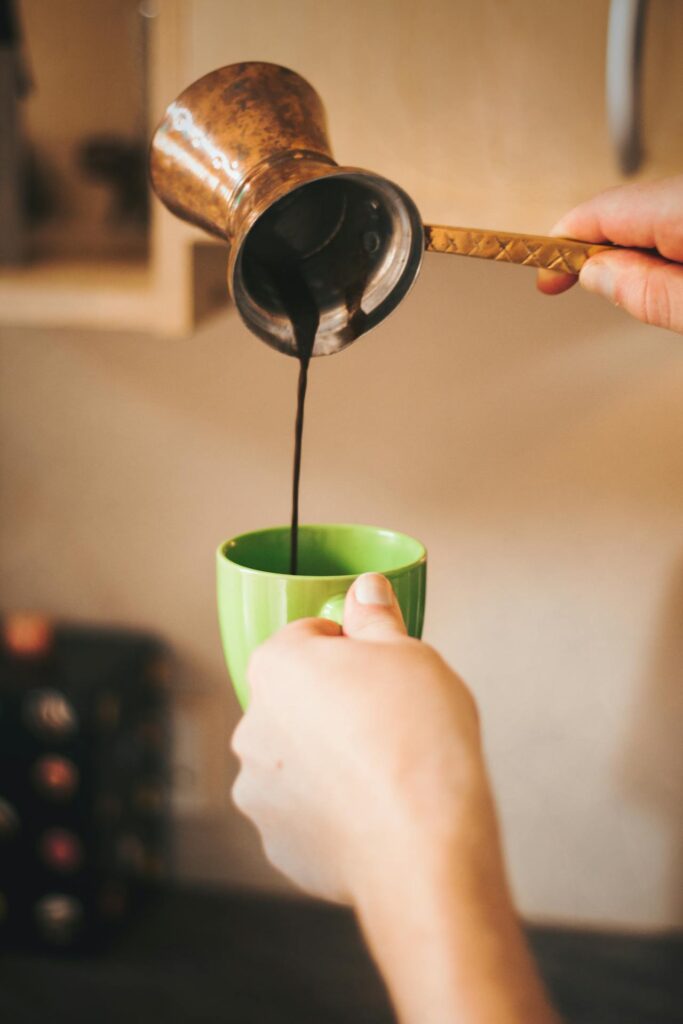
Use a 1:10 coffee-to-water ratio – about 7g of coffee per 70ml water (one traditional serving). Sugar goes in at the beginning: none (sade), a little (az şekerli), medium-sweet (orta), or very sweet (şekerli). Stir only at the beginning when cold – never once heating begins. The grind is crucial: it should be even finer than espresso, almost like cocoa powder.
Most coffee shops can’t grind this fine, so consider investing in a hand grinder with Turkish settings. The ideal brewing temperature is around 70°C – use the lowest heat setting and be patient. The entire process should take 3-4 minutes.
Siphon Brewing: Science Class Meets Coffee Shop
If you want to feel like a Victorian scientist while making your morning brew, siphon coffee is for you. This theatrical method uses vapour pressure and vacuum to brew coffee, and watching it in action is genuinely mesmerising.
Water in the bottom chamber heats up, creating vapour pressure that pushes it into the upper chamber where it mixes with coffee grounds. Remove the heat source, and physics takes over – the cooling air creates a vacuum that pulls the brewed coffee back down through a filter. The result is an incredibly clean, tea-like coffee that highlights subtle flavours. Yes, it’s a bit of a production, but sometimes your Sunday morning deserves a show.
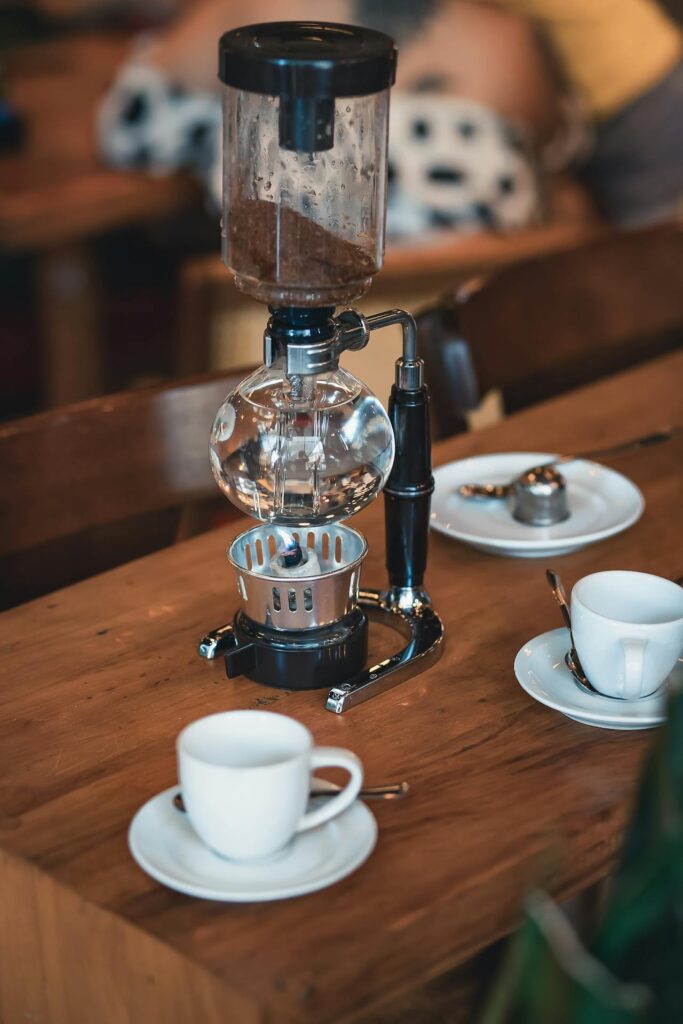
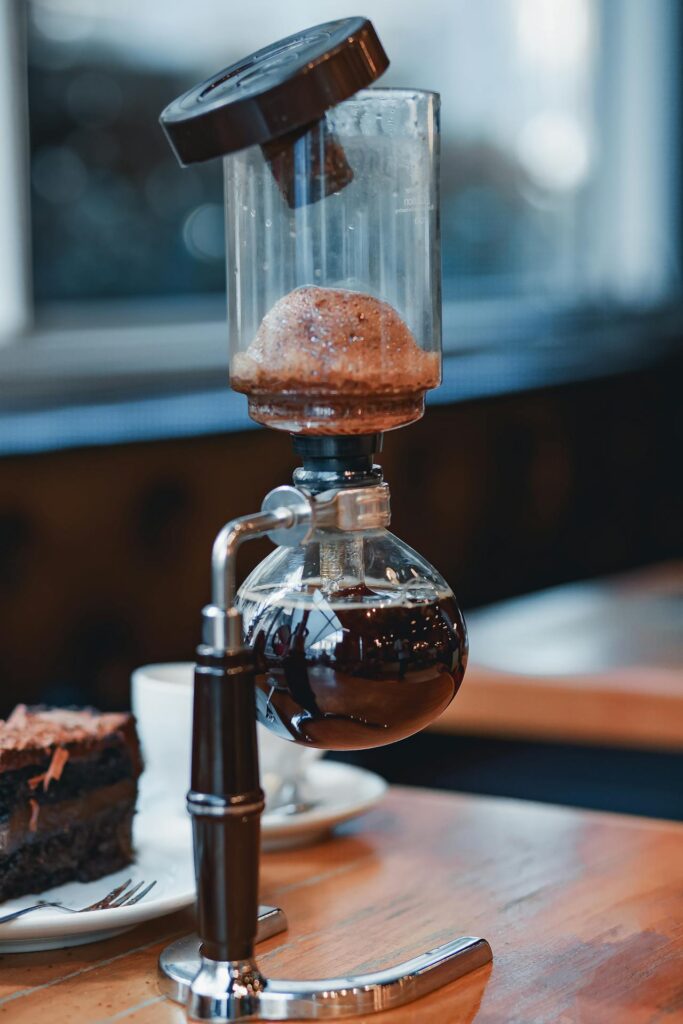
Use medium-coarse grounds (similar to pour-over) at a 1:15 ratio. Once water rises to the upper chamber, reduce heat to maintain temperature without violent bubbling. Add coffee, stir gently, and brew for 90 seconds. Give one final stir, then remove from heat – the drawdown should take about 45-60 seconds. If it’s taking longer, your grind is too fine; if faster, too coarse.
Clean immediately after use while still warm – dried coffee oils make cleaning difficult. Most siphons use either cloth or paper filters; cloth provides fuller body but requires careful maintenance (rinse thoroughly and store in water in the fridge between uses).
The Bottom Line
Mastering these globally diverse brewing methods isn’t about becoming a coffee snob (though a little knowledge never hurt anyone at a dinner party). It’s about discovering what you enjoy and having the skills to make it happen. Start with one new method that intrigues you, give yourself permission to make a few terrible cups while you learn, and remember – even coffee professionals had to start somewhere.
Whether you become a pour-over perfectionist or stick with your trusty cafetière but with newfound appreciation, the goal is the same: a brilliant cup of coffee that makes your morning that little bit better. After all, life’s too short for bad coffee, especially when good coffee is just a new brewing method away.





